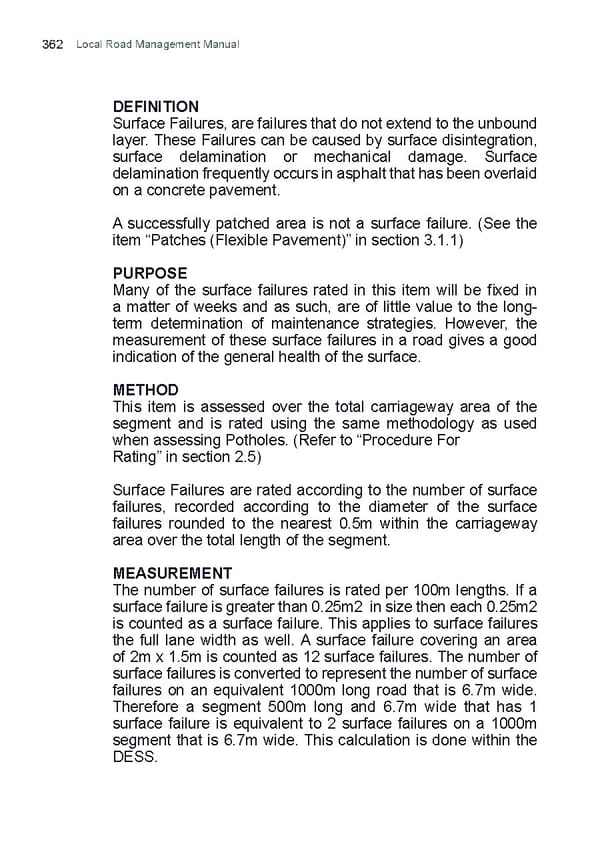Local Road Management Manual 362 DEFINITION Surface Failures, are failures that do not extend to the unbound layer. These Failures can be caused by surface disintegration, surface delamination or mechanical damage. Surface delamination frequently occurs in asphalt that has been overlaid on a concrete pavement. A successfully patched area is not a surface failure. (See the item “Patches (Flexible Pavement)” in section 3.1.1) PURPOSE Many of the surface failures rated in this item will be fixed in a matter of weeks and as such, are of little value to the long- term determination of maintenance strategies. However, the measurement of these surface failures in a road gives a good indication of the general health of the surface. METHOD This item is assessed over the total carriageway area of the segment and is rated using the same methodology as used when assessing Potholes. (Refer to “Procedure For Rating” in section 2.5) Surface Failures are rated according to the number of surface failures, recorded according to the diameter of the surface failures rounded to the nearest 0.5m within the carriageway area over the total length of the segment. MEASUREMENT The number of surface failures is rated per 100m lengths. If a surface failure is greater than 0.25m2 in size then each 0.25m2 is counted as a surface failure. This applies to surface failures the full lane width as well. A surface failure covering an area of 2m x 1.5m is counted as 12 surface failures. The number of surface failures is converted to represent the number of surface failures on an equivalent 1000m long road that is 6.7m wide. Therefore a segment 500m long and 6.7m wide that has 1 surface failure is equivalent to 2 surface failures on a 1000m segment that is 6.7m wide. This calculation is done within the DESS.
 Local Road Management Manual Page 362 Page 364
Local Road Management Manual Page 362 Page 364